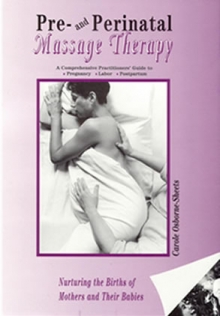Did you put the massage tips from last month’s issue to the test on Valentine’s Day? (If you tried out on your new moves on the dance floor, even better!) Keep those good vibes going throughout the year with three more ways to improve your massage moves and your dance moves:
1. Rate: the speed of travel
We begin again with basic dance footwork, the step-touch. (Review step 7 in this emergency dancing guide.) Make the most of this move by changing your rate to match the music. Travel briskly across the floor with light steps, or slowly with heavy, rooted feet.
How do we apply rate to our basic massage stroke, a smooth gliding effleurage? A swift superficial glide can cover a lot of skin, whereas a deeper stroke will require more time, sinking in as it travels across the tissues. Your partner will appreciate it if you take your time with deeper strokes; wait for those tissues to respond to your touch, to soften and melt.
2. Rhythm: the pattern and speed of repeated strokes or moves
On the dance floor, change your rhythm to get your heart rate going. Start off with slow, languid step-touches, accelerate to zippy little taps, and finally go as fast you can, like the floor is setting your feet on fire!
Apply rhythm in your massage–warm up your partner’s legs with some leisurely effleurage strokes, then speed up with brisk “shingling,” alternating your hands. Finally, go to town with tapotement. Tapotement (aka percussion) is a rhythmic drumming stroke; try alternating the pinky sides of your hands, either in a soft karate chop or a soft, open fist. Keeping your wrists and hands soft lets your fingers squish together as they make contact (more comfort for your partner) and then bounce back up (easier and faster for you). Tapotement is especially good for fleshier areas of the body, like the glutes.
Want more tips like these? Please let me know. Your feedback and ideas will help me provide articles and resources specific to your needs.
Recently, a potential client asked me if I used a “prego pillow,” which accommodates a pregnant belly and lets mom lie face down. I’ve used such cushions in the past, and I can understand the desire to lie prone again–probably for the first time in months. During a massage, the prone position offers great access to those tense shoulder, back, and hip muscles.
Now that I’ve taken advanced training in prenatal bodywork, I believe that the risks of lying face down outweigh the perceived benefits. After about the first 13 weeks of pregnancy, the combination of mom’s weight plus the added pressure of massage increases intrauterine pressure, even with additional cushions. Some therapists invest in massage tables with belly cut-outs; these place additional strain on the already hardworking uterine ligaments. In order to place the safety of both mom and baby first, I choose to avoid prone work after week 13.
With the right pillows and cushions, sidelying is a wonderfully comfortable position. With the right body mechanics, a skilled massage therapist can apply deep, relaxing pressure to all those areas you’d normally work on with the client face down.
Do I use a prego pillow or cut-out table? No. Will you find relief from pain and tension in the places you need it most? Yes. Will you rest on the table in complete comfort? Definitely.
Who do you know that could benefit from articles, tips, and advice on massage and wellness? Point your friends and family toward www.truenorthmassage.com if they’d like to receive this newsletter.
Thank you for your business. I look forward to seeing you again soon!
Sheila Resari, LMT



